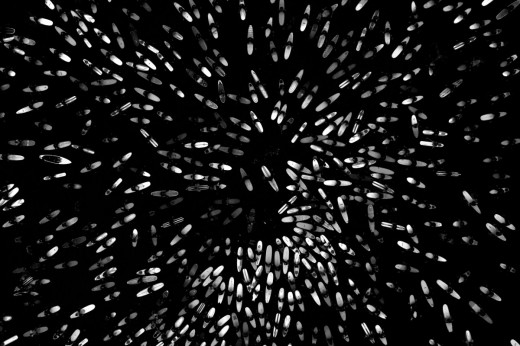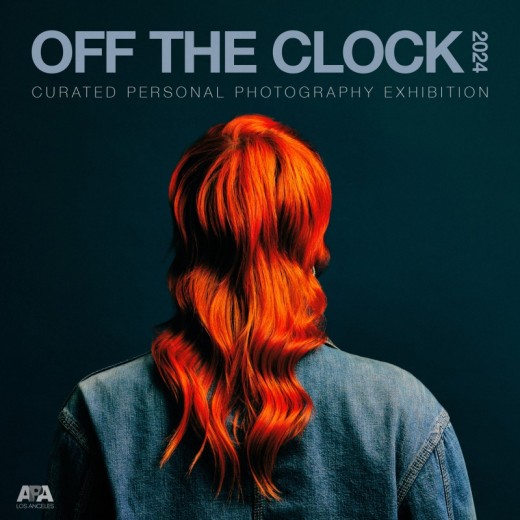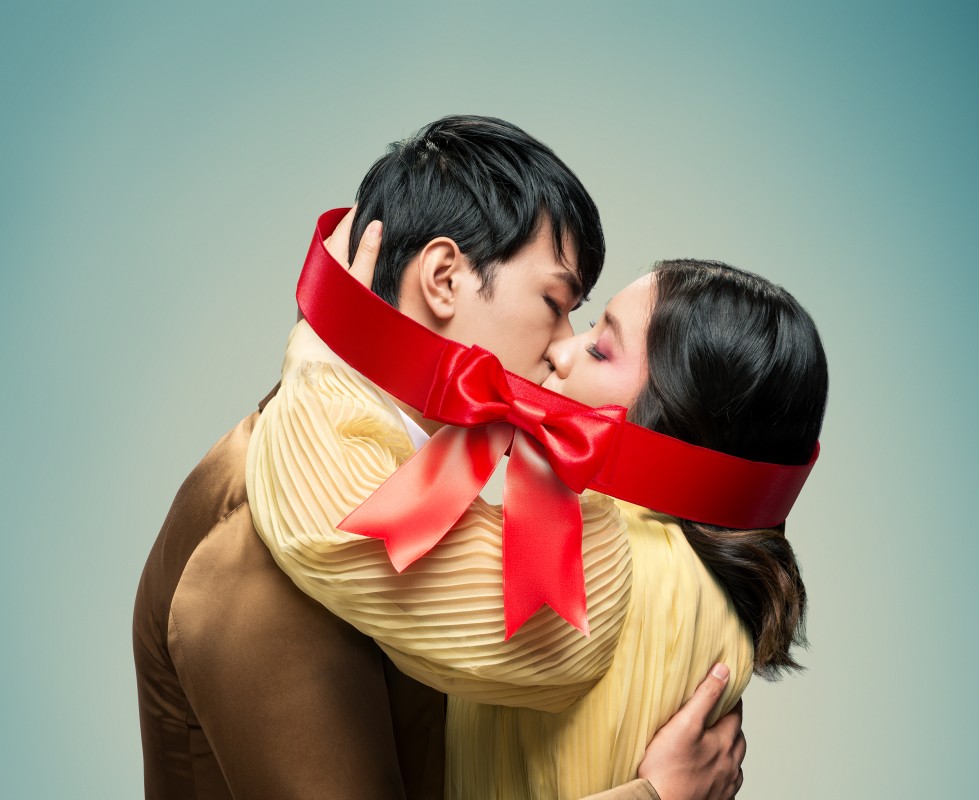
Gift of Love, 2021 ©Hugh Kretschmer
Interview by Polly Gaillard
Hugh Kretschmer (APA Los Angeles member) had not imagined thirty-plus years of his art coming together in just three months in an exhibition at the Hoban Artrium Museum in Gwangmyeong-si, South Korea. Still, it did, and in a pandemic no less. The 12,000 square foot museum encompasses fifteen separate galleries boasting Kretschmer's retrospective, including early photo-illustrations, portraits, and recent conceptual images about climate change. An illustrator with a camera, the artist demonstrates a process and versatility uncommon in commercial and fine art photography. While 20th Century Surrealist and Cubist movements underpin and inform much of Kretschmer's practice, many of his early images seem to be an homage to Jerry Uelsmann, the prolific pioneer of photomontage (pre-Photoshop). With an unbridled curiosity and a passion for conceptual image-making, Kretschmer draws on art historical references yet finds a voice so unique and compelling that it's difficult to imagine what he will create next; it's unimaginable.
How did your Imagine the Imagination exhibition at Hoban Artrium Museum in Gwangmyeong-si, South Korea, come about? Have you ever had a show of this breadth and depth?
HK: I can only guess that Museum Curator, Cecilia Jo, had been watching my work for a while, most likely through the many portals where my images appear. For all I know, she had been formulating this plan way before she got a hold of me because she had let me know there was a plan in place in her first email.
I’ve had solo exhibits in galleries before, but nothing like this. What Jo did was extraordinary. For me, it was a personal dream come true. In actuality, what she put together was beyond my hopes and dreams. I was merely hoping for a gallery, any gallery, to represent me in a foreign country, not a museum, and certainly not at this scale. Instead, Jo blew me away! I was so overwhelmed by the photos she sent of the finished exhibit space; I wept when I first saw them.
_Exhibit_Entrance_1_Final_copy.jpg)
Hoban Artrium Museum exhibition
Can you describe how you began the daunting task of selecting the images for the show? Was it challenging to manage the logistics of this large-scale production, given that you were unable to travel to South Korea due to Covid-19?
HK: It wasn’t me who selected the images for the show; it was Jo. I merely sent her digital files of almost everything in my archive, and she took it from there. We had 12,000 sq./ft. of space to fill, and 15 galleries divide the museum. We worked together in segmenting the images into different categories. I suggested using my book mockup of an upcoming monograph as a design guide because I had already divided the work across multiple chapters. She took it from there and came up with a melding of my suggestions, mixed with her curatorial expertise, keeping in mind her patrons and South Korean audience.
It was definitely a large-scale production Jo had in mind, and you can see by the photos she covered every detail down to the smallest element. However, what was most remarkable was that the exhibit was organized in 3 months. That’s pretty extraordinary, given that most galleries and museums plan their calendars years in advance. She assured me her confidence by letting me know, “Koreans are a people who produce certain results very quickly.” The museum is owned by a billionaire developer in South Korea and has the respect and resources much like an Eli Broad or a J. Paul Getty. They had an army of talented people who helped put it all together. Carpenters, fabricators, writers, designers, printers, and framers - all made their mark on this exhibit. I am personally very grateful for their contributions.
_Blustery_Day_1_Final_copy.jpg)
Hoban Artrium Museum exhibition
I’ve read that you consider yourself a photo-illustrator rather than a photographer. Do you believe that your process of creating (concept, drawing, set building, photographing, then digital manipulation) aligns you more with an outcome of drawing and painting than photography?
HK: I've used the title Photo-Illustrator to describe the genre of photography I've created over the last 30 years. It was a label creatives were using to describe my work early in my career, so I adopted it. However, the more I think about it, the more I realize how fitting that label is. Not for the fact that I make my own props and sculptures, nor that I sketch my ideas. I believe it's because I think like an illustrator, but I use a camera instead of a pencil.
My personal library is swayed towards art books and museum catalogs, much like my mother's collection. She introduced me to the Early 20th Century art movements that influenced my early work, and that influence from art continues to this very day.
I'm so drawn to illustration and painting because limitations do not bind those media like they do photography. Now, you might say that photography has no limits, especially since it's gone digital. I agree with that sentiment, but only to a point. That point is, photography is limited because it is as close a rendering of reality as we know. For the most part, all photographs are created in the same way. It is not interpreted through as wide a range of techniques as painting or illustration. Every painter or illustrator's work is different from the next due to their individual applications. They have their own signature style, and each uses a different medium, or a combination thereof, utilizing oils, watercolor, pen & ink, or collage. Their abilities and concepts are only limited by their imagination. As photographers, we are challenged with separating our work from others'. My underlying mission is to create work that has never been done before and is strictly my own. Sometimes I don't succeed in that venture, but I do most of the time, which gives me a very satisfying feeling.
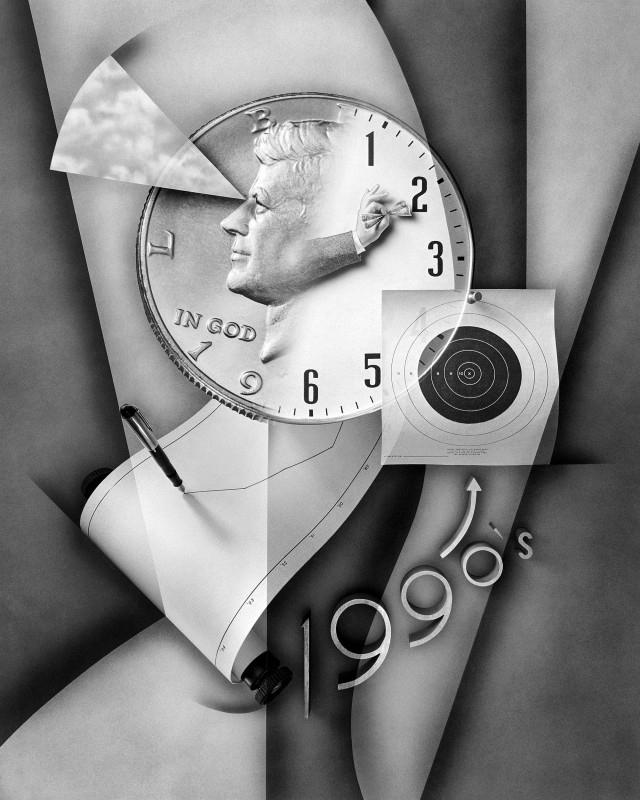
Prospectous ©Hugh Kretschmer
I assume that you most likely encountered the work of surrealist photographer Jerry Uelsmann in your early career. How did it impact you?
HK: My father gave me a monograph of Jerry Uelsmann’s when I was 13 years old. I guess Dad saw something in my photos that I wasn’t aware of at the time. That book was life-changing for me. Within his work, I realized there were no limitations to what I could do with my own photography. I even used a hybrid version of his photo-montage technique in one of my early commissions.
I still have that book, and it is one of my most prized possessions. I once tried to get it autographed by Mr. Uelsmann when he spoke at the New York Photo Expo nearly 20 years ago. I sat in the audience mesmerized, waiting for my opportunity to meet him. Then my phone rang with news that my young daughter had become ill and I had to leave. I was bummed but determined. I miraculously found his address, sent him the book with a note of appreciation, and included printed copies of my own photographs. Three weeks later, I received a package from him. In it was not only my signed copy but his most recent monograph and a note of his appreciation for how I had turned his influence into my own style of work. The letters and books alike are all wrapped in archival plastic and proudly shelved in my library.

Fashion Industry ©Hugh Kretschmer
There seems to be many art historical references in your work – the surrealists Salvador Dali, René Magritte, Man Ray; the cubists Pablo Picasso and Georges Braque and the graphic artist MC Escher. Do you look to art history for inspiration? And if so, what is it about these artists' work that inspires you?
HK: My mother, who was the original artist of the family, introduced me to 20th Century art movements, especially the artists you mentioned. Their influence has played a crucial role in my photography from the very beginning of my career through today.
Lately, it has been brought to my attention that my work could be traced to Magical Realism. In researching the genre, I can see where that suggestion comes from and understand the correlation. It makes perfect sense to me. But, as far as whose work I am looking at today, one notable artist that has directly influenced me has been Robert Longo’s paintings and charcoal drawings, especially his Epic Wave series. It was one of those drawings that spawned my current project, Plastic “Waves”.
It’s uncommon for an artist’s work to cross the boundaries of fine art and commercial markets. Has it been easy for you to apply fine art principles to commercial clients? Do you need to keep your fine art separate from your commercial brand?
HK: My first agent pointed out that my photographs seem to ride the edge between art and commerce. I realize, more than ever now, how right he was and how much of the work I create, whether commissioned or created as a personal project, can easily hang on a gallery wall. Be that as it may, my intent has always been for the printed page. It hasn’t been until the last couple of years that I’ve been creating projects with a “fine-art” objective. Even though I’ve considered myself a commercial photographer first and foremost, I’ve always perceived my photography as more of an art form rather than a business. That may explain why the work might beg the question, art or commerce?
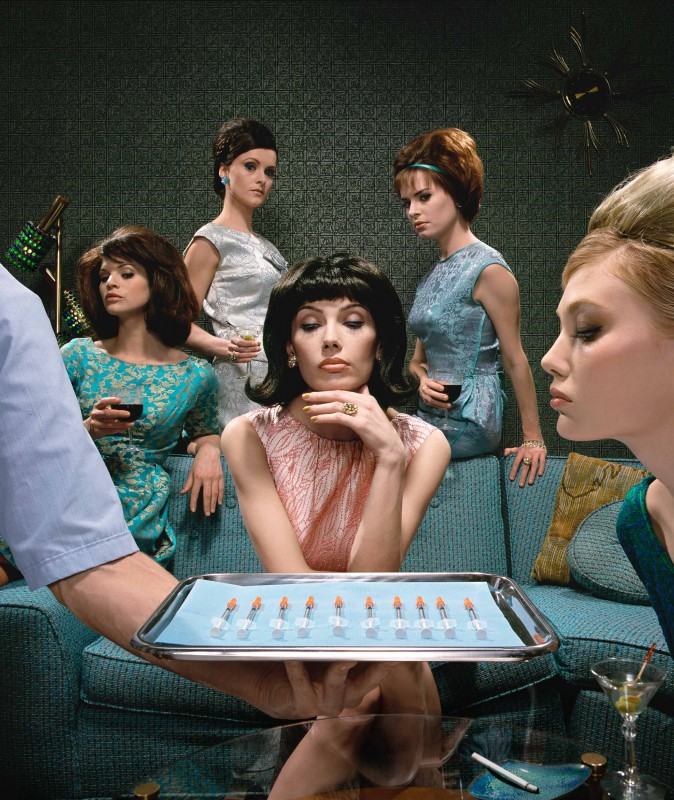
Botox Party ©Hugh Kretschmer
Building your images seems to be a very complex process, however, they appear precise and simplistic. What is your pre-production process like – after the initial concept and drawing, then what happens?
HK: I try to keep my concepts to the bare minimum and only to the essentials. I strive for simplicity and don't include anything that might take away from the intended message. Planning is key towards achieving that goal, and sketching out my concepts helps. Drawings also help with designing my composition, lighting scheme and, most importantly, communicating my ideas to the creative team. Besides, I need to see just how the concept in my head can translate to a photograph. Most importantly, however, I sketch the idea out based on the budget I have to work with.
Once the sketch and concept are approved, pre-production begins, and the scale of the project usually determines how much time I'll need. I take as much time as I can get during pre-production. It is that time before the shoot day that plays a vital part in my workflow. Because I come from the editorial end of the industry, I know how to squeeze a small budget into a deceptively larger-looking production. To do so, I've learned a lot of other skills outside of photography that enable me to do most, if not all, of the work necessary to create the original vision. Those skills involve me as a producer, prop fabricator, wardrobe stylist, and set designer & builder. Quite frankly, I've done it all and continue that approach in almost every project I undertake, whether commission or personal. Over the past several advertising gigs, I've been brought in on the early stages of the process to help formulate concepts. In those types of projects, the best of what I do comes out, and the results have been amazing.
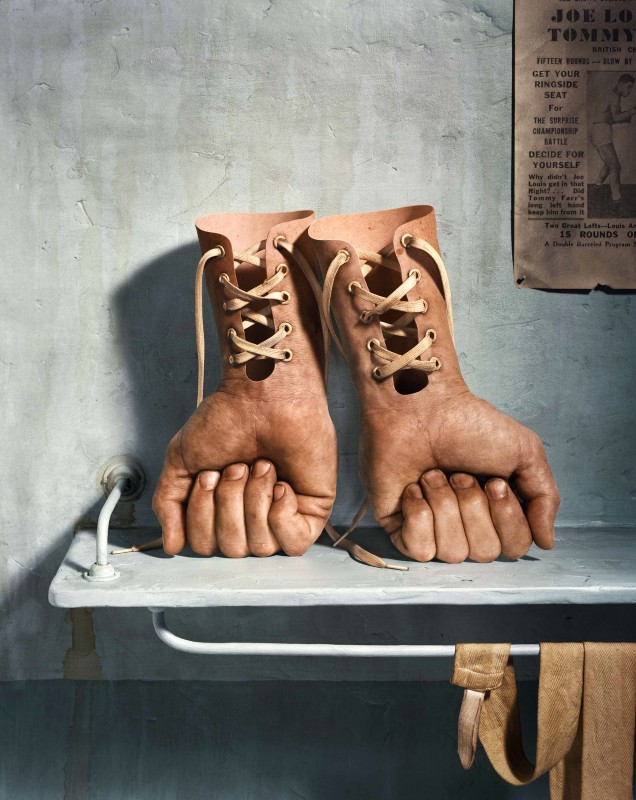
Boxing Gloves, 2006 ©Hugh Kretschmer
Can you discuss your post-production process? How many images typically make one final photograph? Does the final image resemble the initial sketch, or do you remain open to the process?
HK: I’ll answer your second question first. Very rarely does the final image divert from the initial sketch. It is only in situations where I’m hesitant about the outcome that the results look different than the drawing. I have to be open to other possibilities in those cases, but I also try to be open throughout all my shoots. There are never any guarantees, so I have to be ready for twists and turns along the way.
As far as your first question, unless I have a budget and/or the retouching needed is beyond my skill level, I’ll bring in my “go-to” post-production team. Otherwise, I do it myself, and that is most of the time. The amount of post-production needed for any given project is as different and unique as the artwork itself. However, I strive to have my productions utilize as little Photoshop as possible because I don’t like sitting behind a computer for very long.
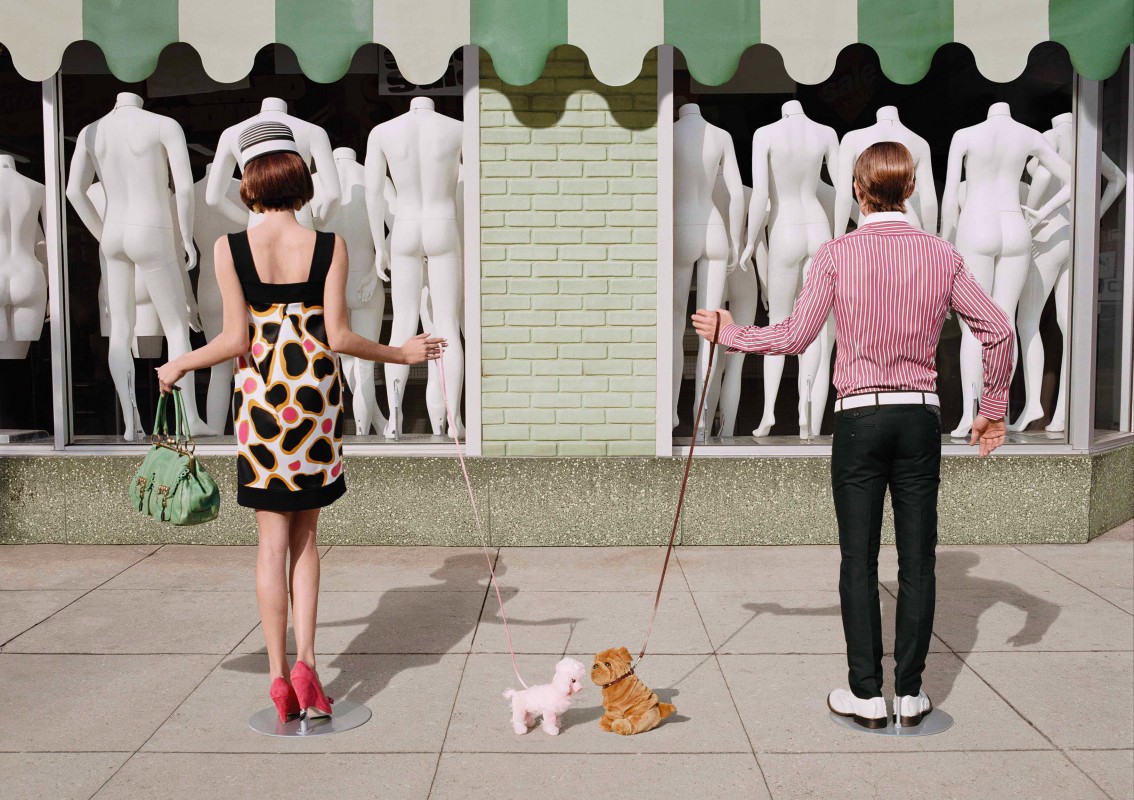
Curious Site ©Hugh Kretschmer
Where did you attain the sense of playfulness and humor that is so apparent in your work?
HK: I'm not sure exactly where that quality comes from, but I've always loved a dry sense of humor, especially in the New Yorker cartoons I discovered as a kid. I think if there is any iota of influence from that magazine showing up every week in my family's mailbox, it would be in the back pages where most of them lived. I admire those cartoonists because they have one frame to illustrate and create a clever anecdote.
I'm also a big fan of Wes Anderson's films. To me, his ability to mix media in whimsical ways warms my heart and injects a freshness that is rare and precious. What I find so refreshing about his stories is their innocence. It's an endearing and aspiring quality I try to bring to my own work.
But I also have a dark side to my storytelling. In the early 2000s, what I was producing was of that ilk. I was creating these 3D collages of severed body parts reassembled in strange ways and in odd settings. Mind you, it all started right after 9/11/01, when I was living in NY and personally witnessed that day from my perch on the Brooklyn Bridge. (I made photographs that day from that vantage point, and one of them is now on permanent display at the 911 Museum in NYC.) I didn't sleep well for the next two years and was haunted by the fact that rescuers were looking for victims' remains at Ground Zero around the clock. It wasn't until 20 years later that I made the connection to that day and what I was producing. That realization was stimulated by a documentary producer from MSNBC who reached out to me earlier this year to ask questions about that photograph for a film she was working on, Echos of 911.
After about five years of producing this "darker" work, my agent at the time questioned it. He was finding resistance from creatives when showing it and suggested, "Shoot something brighter, more colorful, and fun because you're freaking people out."
Also, your question reminds me of how impressionable I can be and how I can see things differently and from different angles. That's why it's hard for me to pinpoint where inspiration comes from. Inspiration comes from a lifetime of seeing, and who can keep track of all those experiences?
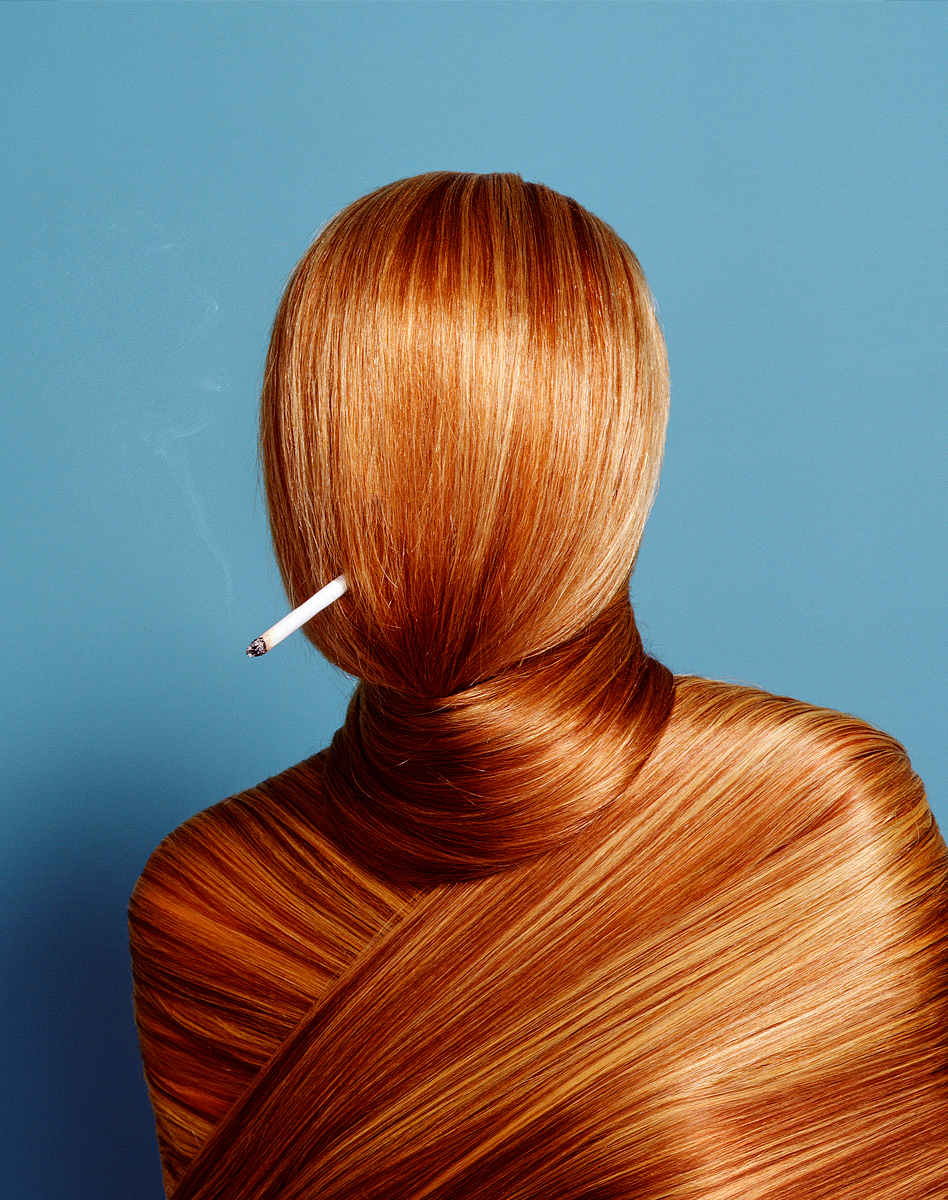
Smoking Hair ©Hugh Kretschmer
You seem to have a wellspring of ideas. Do you see every idea through to completion? How do you keep from having creative blocks? What sources do you draw from to keep your creativity fresh?
HK: Yes, I have a lot of sketchbooks filled with unrealized ideas. In fact, I am about to resurrect one I sketched over 20 years ago for an online course I am teaching on a large “learning” platform I am a part of now. It involves my 3D Collage process and a technique I haven’t attempted in many years, so stay tuned.
Because I have a backlog of ideas, I never seem to get into creative blocks or have yet to experience one. The blocks I do experience are connected more to validity and appropriateness. Questions that I grapple with are, “Where does this fit into the commercial end of the industry?” or, “Is this work passé?” As we all know, photography is extremely fashionable and can be difficult to adapt sensibilities to current trends. In the past, I’ve tried to create work with the hopes of winning a particular gig, but that never really worked for me. In those instances, I wasn’t very true to my own way of thinking. I learned that lesson the hard way and will never do it again. Instead, I’m just following my heart’s content, putting it out there, and then seeing what comes back. This retrospective in South Korea is just one of many wonderful opportunities that have come back to me.
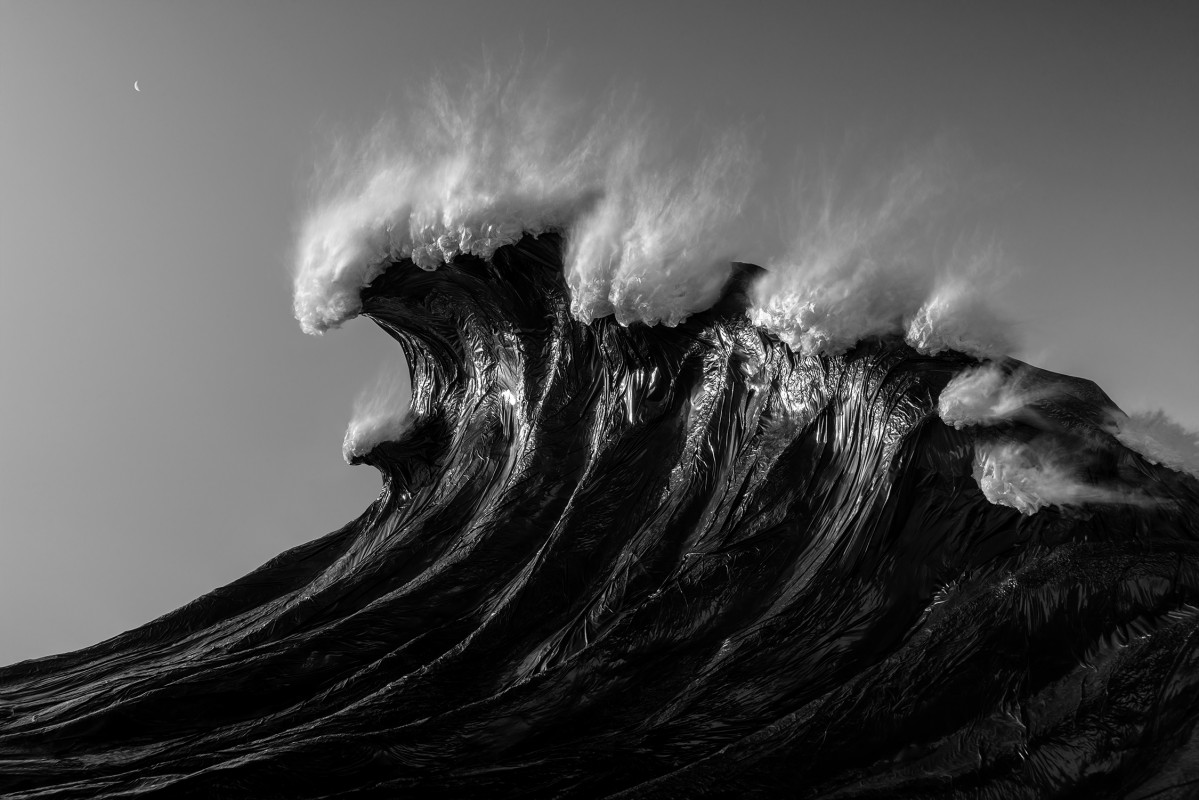
Plastic "Wave" #3 ©Hugh Kretschmer
Can you discuss your work about climate change in reference to your project Plastic “Wave”? What is the ultimate goal of this philanthropic undertaking?
HK: I appreciate this question most of all. Plastic “Waves” is an offshoot of a previous project titled, Mirage, which I began in late 2018. It is a visual commentary on the effects of human behavior on our natural water systems. I use recycled, repurposed, or rejected plastic in various forms to make sculptures or use them as a central element in the photographs.
My philanthropic endeavor for this project is to benefit nonprofits devoted to water conservation through gallery print and book sales.
The Plastic “Wave” project came up after seeing a charcoal drawing of Robert Longo’s Epic Wave series in a gallery at Bergamot Station. It was the last gallery I walked into right before they closed for the day, as well as the last day of the exhibit; it seemed like a fluke. I hate to think about it, but if I didn’t squeeze in that last gallery at the last minute, that series may have never been realized.

Plastic Puddle ©Hugh Kretschmer
Do you have any plans to exhibit your retrospective Imagine the Imagination in the United States?
HK: No, not at this point. However, I will be sharing this event with the many galleries where I aspire to exhibit. But, I think it best to let it happen if that is what the Universe wants. That being said, I just received word that a selection from the Plastic “Wave” series will be in a group show at BBA Gallery in Berlin. And, that goes to the point I am trying to make- I’m only responsible for putting the work out there. What comes back to me is out of my control.

